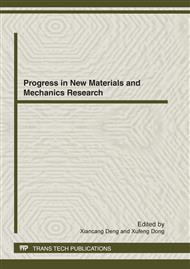p.60
p.67
p.72
p.77
p.82
p.87
p.91
p.96
p.101
Study on Dielectric Relaxation in BiFeO3/Bi3.25La0.75Ti3O12 Film
Abstract:
BiFeO3 (BFO) film is considered as relaxor ferroelectric film with a leakage current, and Bi3.25La0.75Ti3O12 (BLT) film is regarded as ferroelectric film with a leakage current. Maxwell- Wagner (M-W) theory has been used to study the dielectric relaxation behavior of BiFeO3 (BFO)/Bi3.25La0.75Ti3O12 (BLT) films grown on Pt/Ti/SiO2/Si substrate. Results show that the characteristics of BFO film significantly affect the dielectric relaxation behavior of the BFO/BLT film. The theoretical results agree well with the experimental data when the temperature is above 400K. It is inferred that the polycrystalline orientation of BFO film leads to the presence of disorganized polar nanoregions (PNRs) in BFO film. And BFO film exhibits relaxation characteristics at high temperatures.
Info:
Periodical:
Pages:
82-86
Citation:
Online since:
April 2012
Authors:
Price:
Сopyright:
© 2012 Trans Tech Publications Ltd. All Rights Reserved
Share:
Citation:


